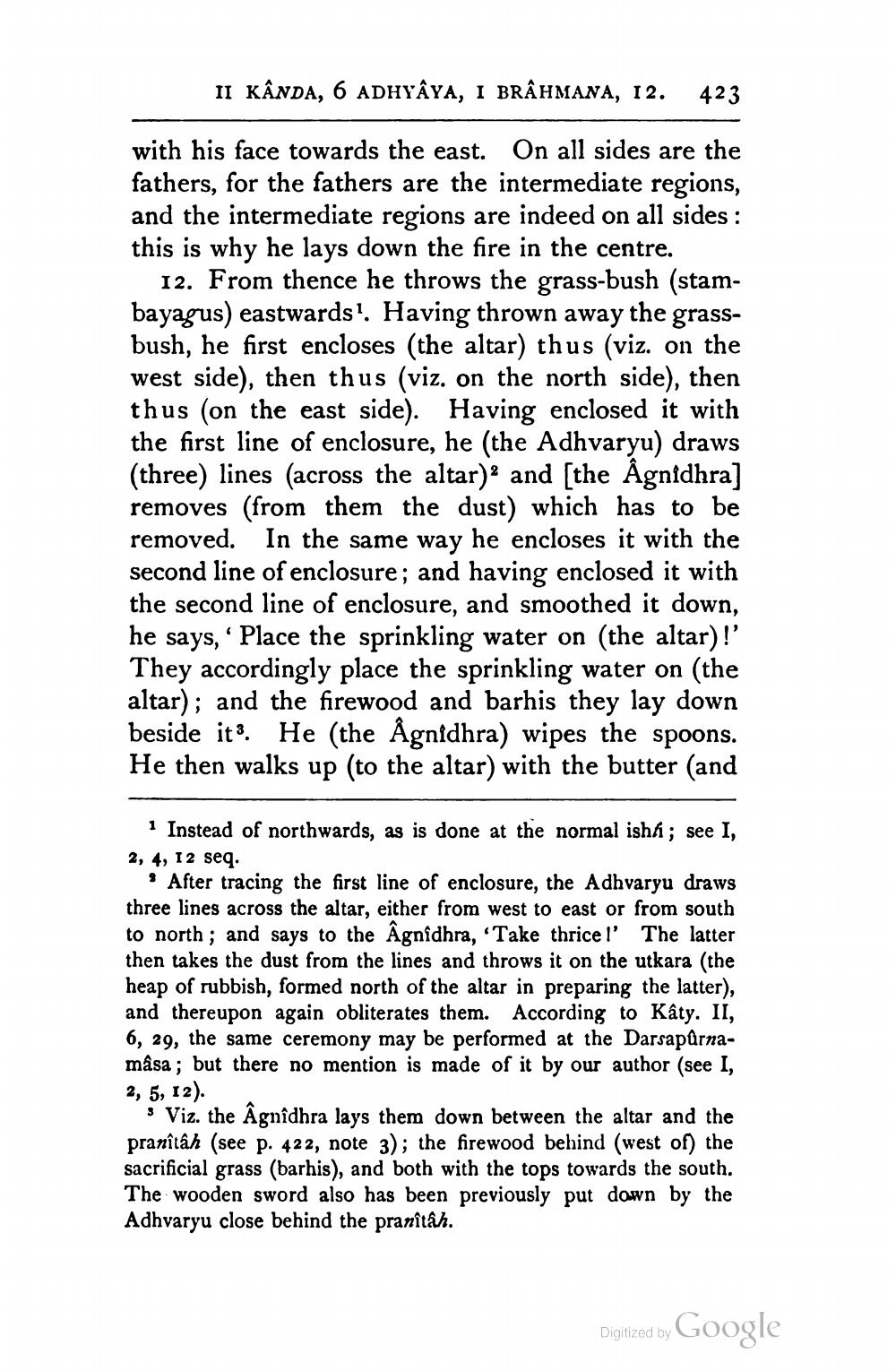________________
II KÂNDA, 6 ADHYAYA, I BRÂHMANA, 12. 423
with his face towards the east. On all sides are the fathers, for the fathers are the intermediate regions, and the intermediate regions are indeed on all sides : this is why he lays down the fire in the centre.
12. From thence he throws the grass-bush (stambayagus) eastwards!. Having thrown away the grassbush, he first encloses (the altar) thus (viz. on the west side), then thus (viz. on the north side), then thus (on the east side). Having enclosed it with the first line of enclosure, he (the Adhvaryu) draws (three) lines (across the altar)2 and [the Agnidhra] removes (from them the dust) which has to be removed. In the same way he encloses it with the second line of enclosure; and having enclosed it with the second line of enclosure, and smoothed it down, he says, ' Place the sprinkling water on (the altar)!' They accordingly place the sprinkling water on (the altar); and the firewood and barhis they lay down beside it. He (the Agnidhra) wipes the spoons. He then walks up (to the altar) with the butter (and
1 Instead of northwards, as is done at the normal ishl; see I, 2, 4, 12 seq.
• After tracing the first line of enclosure, the Adhvaryu draws three lines across the altar, either from west to east or from south to north; and says to the Agnidhra, 'Take thricel' The latter then takes the dust from the lines and throws it on the utkara (the heap of rubbish, formed north of the altar in preparing the latter), and thereupon again obliterates them. According to Kâty. II, 6, 29, the same ceremony may be performed at the Darsapůrnamasa; but there no mention is made of it by our author (see I, 2, 5, 12).
Viz. the Âgnîdhra lays them down between the altar and the pranîtah (see p. 422, note 3); the firewood behind (west of the sacrificial grass (barhis), and both with the tops towards the south. The wooden sword also has been previously put down by the Adhvaryu close behind the pranîtah.
Digitized by Google




